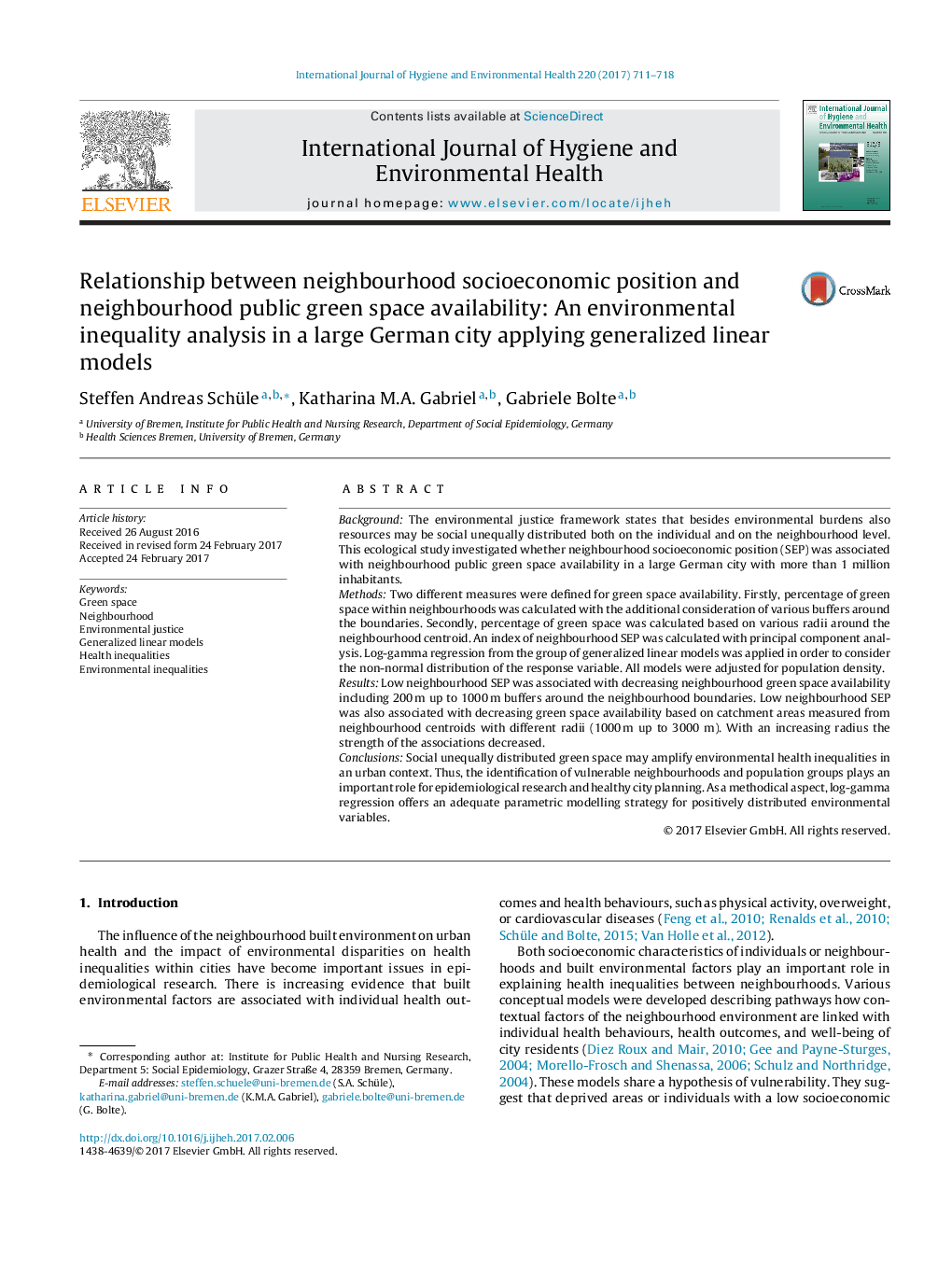| کد مقاله | کد نشریه | سال انتشار | مقاله انگلیسی | نسخه تمام متن |
|---|---|---|---|---|
| 5560564 | 1561873 | 2017 | 8 صفحه PDF | دانلود رایگان |
BackgroundThe environmental justice framework states that besides environmental burdens also resources may be social unequally distributed both on the individual and on the neighbourhood level. This ecological study investigated whether neighbourhood socioeconomic position (SEP) was associated with neighbourhood public green space availability in a large German city with more than 1 million inhabitants.MethodsTwo different measures were defined for green space availability. Firstly, percentage of green space within neighbourhoods was calculated with the additional consideration of various buffers around the boundaries. Secondly, percentage of green space was calculated based on various radii around the neighbourhood centroid. An index of neighbourhood SEP was calculated with principal component analysis. Log-gamma regression from the group of generalized linear models was applied in order to consider the non-normal distribution of the response variable. All models were adjusted for population density.ResultsLow neighbourhood SEP was associated with decreasing neighbourhood green space availability including 200Â m up to 1000Â m buffers around the neighbourhood boundaries. Low neighbourhood SEP was also associated with decreasing green space availability based on catchment areas measured from neighbourhood centroids with different radii (1000Â m up to 3000 m). With an increasing radius the strength of the associations decreased.ConclusionsSocial unequally distributed green space may amplify environmental health inequalities in an urban context. Thus, the identification of vulnerable neighbourhoods and population groups plays an important role for epidemiological research and healthy city planning. As a methodical aspect, log-gamma regression offers an adequate parametric modelling strategy for positively distributed environmental variables.
Journal: International Journal of Hygiene and Environmental Health - Volume 220, Issue 4, June 2017, Pages 711-718
